Helge Jung
General Helge Victor Jung (23 March 1886 – 3 January 1978) was a Swedish Army officer. He was the Supreme Commander of the Swedish Armed Forces from 1944 to 1951.
Helge Jung | |
|---|---|
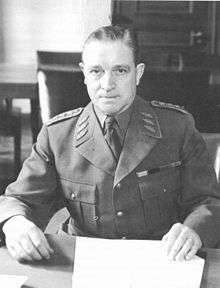 | |
| Birth name | Helge Victor Jung |
| Born | 23 March 1886 Malmö, Sweden |
| Died | 3 January 1978 (aged 91) Stockholm, Sweden |
| Buried | Djursholm cemetery |
| Allegiance | Sweden |
| Service/ | Swedish Army |
| Years of service | 1906–1951 |
| Rank | General |
| Commands held | |
| Relations | Bengt Liljestrand (son-in-law) |
Career
Military career
Jung was born on 23 March 1886 in Malmö, Sweden, the son of the headmaster Victor Jung and his wife Maria (née Levan). He was commissioned into the Swedish Army as a second lieutenant in the South Scanian Infantry Regiment (Södra skånska infanteriregementet, I 25) in 1906 and was a cadet officer at the Royal Military Academy from 1919 to 1922. Jung was a teacher of military history together with strategy at the Royal Swedish Army Staff College from 1926 to 1928. He was the head of the Military History Department of the General Staff in 1928 and was the Head of Department in 1929.[1] Jung became a major in the General Staff in 1928, lieutenant colonel in 1933 and became colonel and commanding officer of the North Scanian Infantry Regiment (I 6) in 1936.[2]
Jung was chief of the Military Office of the Land Defense (Lantförsvarets kommandoexpedition) from 1936 to 1937, colonel and executive officer of the Life Regiment Grenadiers (I 3) in 1936 and colonel and Chief of the Army Staff and the General Staff Corps from 1937 to 1940. He became major general of the army in 1938 and was commanding officer of the II Army Division from 1940 to 1942. Jung was then the military commander of the II Military District in 1942 and commanding officer of the IV Military District and was the Commandant General in Stockholm in 1943. He was appointed lieutenant general in 1944 and general in 1944. Jung was the Supreme Commander from 1944 to 1951.[2]
Other works
He was the founder and editor of the Ny militär tidskrift ("New Military Journal") from 1927 to 1930. Jung participated in or was the leader of several research trips for archival studies and battleground studies in Eastern and Central Europe for the General Staff Gustav-Adolfs-verk from 1922 to 1930.[1] He was the Secretary of the Army in the 1930 Defence Commission and in the 1936 Defence Committee.[2]
Personal life
In 1913, he married Ruth Wehtje (1893–1951), the daughter of the deputy district judge Ernst Wehtje and Mimmi Ahnfelt. In 1952, he married Dagmar Bager (1897–1955), the daughter of vice consul John Jeansson and Sigrid Maijström. He was the father of Stig (born 1915), Karin (born 1917) and Elisabet (born 1919–1994).[2] Jung died on 3 January 1978 and was buried in Djursholm cemetery.[3]
Opinion
Helge Jung was largely a composite nature. His personality had traits of cunning and tactical calculation, even cynicism, but at the same time there were also clear hint of idealism and unselfish work for the Swedish military strengthening.[4]
Dates of rank
- 1906 – Underlöjtnant
- 19?? – Lieutenant
- 19?? – Captain
- 1929 – Major
- 1933 – Lieutenant Colonel
- 1936 – Colonel
- 1938 – Major General
- 1944 – Lieutenant General
- 1944 – General
Awards and decorations
Swedish

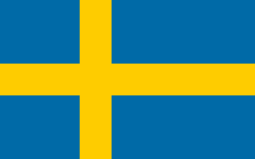





















Foreign

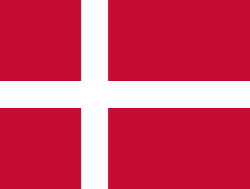





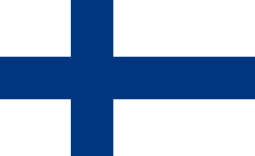





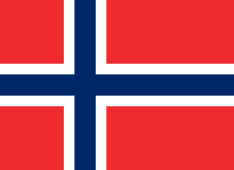



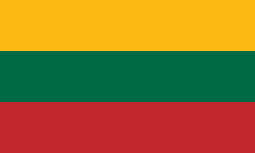

.svg.png)

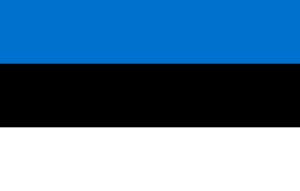

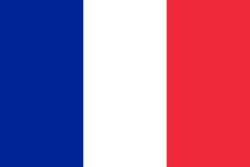



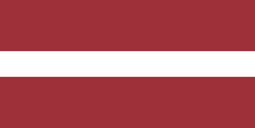

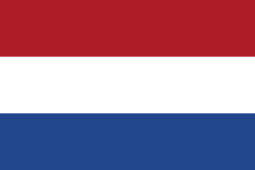

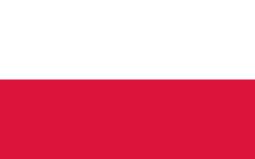

.svg.png)

.svg.png)
Honours
- Member of the Royal Society for the Publication of Manuscripts concerning Scandinavian History (1929)[2]
- Member of the Royal Swedish Academy of War Sciences (1931)[2]
- Honorary member of the Royal Swedish Society of Naval Sciences (1946)[2]
Bibliography
- Jung, Helge (1923). Sveriges möjligheter till självförsörjning: en studie rörande jordbrukets och industriens krigsberedskap (in Swedish). Stockholm: Seelig & C:o. SELIBR 8220850.
- Jung, Helge, ed. (1930). Antingen-eller: freds- och försvarsproblemet i saklig belysning (in Swedish). Stockholm: Ny militär tidskrifts bokförlag. SELIBR 906270.
- Jung, Helge (1947). Vårt framtida försvar: överbefälhavarens förslag (in Swedish). Stockholm. SELIBR 1720170.
- Jung, Helge, ed. (1947). Överbefälhavarens yttrande över 1945 års militärutrednings "Betänkande och förslag angående förhållandet mellan befäl och meniga inom krigsmakten" (in Swedish). Stockholm: [Folk och försvar]. SELIBR 1457870.
- Jung, Helge, ed. (1957). Öst och väst och vi: grupparbete (in Swedish). Stockholm: Norstedt. SELIBR 1369365.
References
- Vem är det: svensk biografisk handbok. 1933 [Who is it: Swedish biographical handbook. 1933] (in Swedish). Stockholm: Norstedt. 1932. p. 424.
- Harnesk, Paul, ed. (1962). Vem är vem? 1, Stor-Stockholm [Who is who? 1, Greater Stockholm] (in Swedish) (2nd ed.). Stockholm: Vem är vem. p. 665.
- "Helge Viktor Jung" (in Swedish). Finngraven.se. Retrieved 25 May 2015.
- Artéus, Gunnar, ed. (1996). Svenska officersprofiler under 1900-talet [Swedish officer profiles during the 1900s] (in Swedish). Stockholm: Militärhögsk. p. 272. ISBN 91-87072-19-X.
- Sveriges statskalender för året 1955 (in Swedish). Stockholm: Fritzes offentliga publikationer. 1955. p. 7.
- Sveriges statskalender för året 1931 (in Swedish). Uppsala: Fritzes offentliga publikationer. 1931. p. 35.
- Sveriges statskalender för skottåret 1940 (in Swedish). Uppsala: Fritzes offentliga publikationer. 1940. p. 11.
- Sveriges statskalender för året 1945 (in Swedish). Uppsala: Fritzes offentliga publikationer. 1945. p. 9.
- Sveriges statskalender för året 1955 (in Swedish). Stockholm: Fritzes offentliga publikationer. 1955. p. 209.
- Sveriges statskalender för året 1945 (in Swedish). Uppsala: Fritzes offentliga publikationer. 1945. p. 81.
- Sveriges statskalender för året 1955 (in Swedish). Stockholm: Fritzes offentliga publikationer. 1955. p. 352.
- Sveriges statskalender för året 1945 (in Swedish). Uppsala: Fritzes offentliga publikationer. 1945. p. 109.
- Sveriges statskalender för året 1947 (in Swedish). Uppsala: Fritzes offentliga publikationer. 1947. p. 109.
- Sveriges statskalender för året 1935 (in Swedish). Uppsala: Fritzes offentliga publikationer. 1935. p. 246.
- Sveriges statskalender för skottåret 1940 (in Swedish). Uppsala: Fritzes offentliga publikationer. 1940. p. 272.
- Sveriges statskalender för året 1950 (in Swedish). Stockholm: Fritzes offentliga publikationer. 1950. p. 101.
- Sveriges statskalender för året 1931 (in Swedish). Uppsala: Fritzes offentliga publikationer. 1931. p. 240.
- Sveriges statskalender för året 1941 (in Swedish). Uppsala: Fritzes offentliga publikationer. 1941. p. 272.
- Svensk rikskalender 1909 (in Swedish). Stockholm: P. A. Nordstedt & Söner. 1908. p. 191. SELIBR 498191.
- Svensk rikskalender 1910 (in Swedish). Stockholm: P. A. Nordstedt & Söner. 1909. p. 192. SELIBR 498191.
Further reading
| Wikimedia Commons has media related to Helge Jung. |
- Konow, Jan von (1999). Helge Jung: opinionsbildare, försvarets nydanare, överbefälhavare (in Swedish). Stockholm: J. von Konows förl. ISBN 9163084716. SELIBR 7454079.
| Military offices | ||
|---|---|---|
| Preceded by Hugo Cederschiöld |
Life Regiment Grenadiers (I 3) 1936–1937 |
Succeeded by Axel Gyllenkrok |
| Preceded by Ernst af Klercker |
Chief of the Army Staff General Staff Corps 1937–1940 |
Succeeded by Folke Högberg |
| Preceded by Ivar Holmquist |
II Army Division 1940–1942 |
Succeeded by Björn Olof Karlsson |
| Preceded by None |
II Military District 1942–1942 |
Succeeded by Henry Tottie |
| Preceded by Erik Testrup |
IV Military District Commandant General in Stockholm 1943–1944 |
Succeeded by Arvid Moberg |
| Preceded by Olof Thörnell |
Supreme Commander 1944–1951 |
Succeeded by Nils Swedlund |